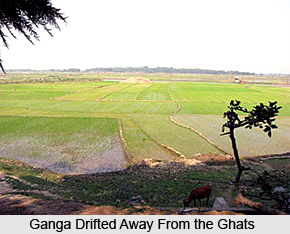Sukharia, a quaint village between Balagarh and Somra Bazar railway stations in Hooghly district, has the distinction of being the site of some of the finest temple architecture of Bengal. Sadly most haven`t withstood the vagaries of time. A few have been rebuilt but the modern structures lack the grace or beauty of their historic counterparts. Even then, a trip to Sukharia gives one a rare insight into the diversity and richness of Bengal`s temple architecture.
 Tourism in Sukharia
Tourism in Sukharia
Positioning oneself under an ancient banyan tree, the ancient temple give a vision to Hooghly, contributing a grand view stretching to Sabuj Dwip (the green island), a well-liked picnic spot approachable from Chinsurah. The flat-roofed Siddeshwari temple, built in the year 1785, is well thought-out to be the oldest in Sukharia. As time ravaged the youth of this temple, it has been reconstructed and local residents speak enthusiastically about it as the temple is supposed to be one of the amicable heritage buildings of the particular site. But quite ironically the reconstructed temple with a single-pinnacle concrete roof and cement-plastered walls and pillars has wiped out centuries of history. Only memoirs associated are the only traces of whisperings of ancient history.
Again the Ananda Bhairavi temple, the star attraction of Sukharia is another tourist spot and every explorer is greeted by the reflection of the towering temple on the adjacent lake, and the other smaller temples in sight. The temples map history and the architectural exploits of the contemporary zamindars. Built in 1813 by Bireshwar Mustafi, the three-storied Ananda Bhairavi temple is crowned with 25 pinnacles.
Ananda Bhairavi records the remnants of extremely rare form of temple architecture and as some archaeologists and art historians nourish the notion there are only five such temples in West Bengal. The approach to the Ananda Bhairavi temple, housing the idol of Goddess Kali, is flanked by two parallel rows containing six temples each. Five of the temples on each row are aatchalas (eight-sloped roof). One temple on each flank has a pancharatna (five-pinnacle) roof. Bhairavi represents the supreme power of speech, which has the nature of fire. Her rage is directed towards the negative forces of the life. She is the supreme light and heat power. Bhairavi indicates the supreme word also known as Para Vak. Thus she is subtler than and is the origin of Goddess Tara. It could be said that as Tara becomes Bhairavi the illumined word turns into supreme light and heat. Bhairavi as Tapas is worshiped by those who wish to seek knowledge. She provides control of the senses and the emotions. Her power of divine speech and spiritual fire eliminates all obstacles. She manifests herself in threefold form in the material universe Fire (Agni), Lightning (Vidyut) and the Sun (Lord Surya).
One of the pancharatna temples is dedicated to Lord Ganesha, while the other nine house Shiva Lingas. The temple has undergone recurring renovation and reconstruction and in the process the old world charm has gone. Next to the Ananda Bhairavi temple lies Radha Kunja, the ancestral palace of the Mustafi family. Although in ruins, the family Durga Puja is still held there.
Hara Sundari Temple built in 1813; this nabaratna (nine-pinnacle) structure is similar to the Ananda Bhairavi temple. Only in this case each row consists of seven temples, comprising two pancharatna and five aatchala temples. Reconstruction has taken its toll on this temple too. Nistarini temple is another attraction. Built in 1847 by the Mustafi family, this "Nabaratna" edifice has dome-shaped pinnacles. The temple was once flanked by a Natmandir but it has long collapsed. Four pillars are all that remains of it. It`s the same story for the Mustafi family`s Thakur Dalan. A few pillars and arches bear testimony to a glorious past.






